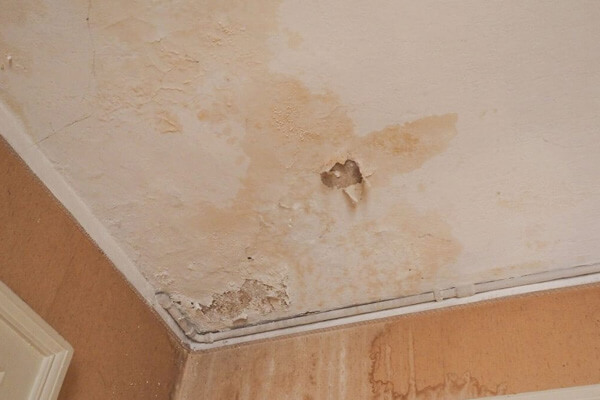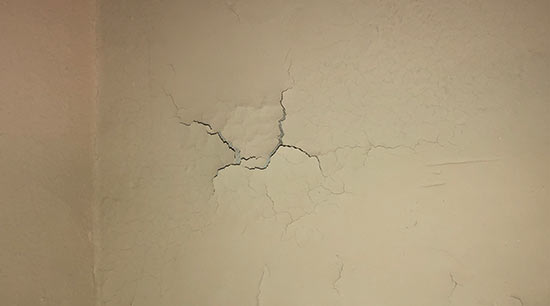They are making a few great pointers regarding How to Find and Repair Water Leaking in the Wall in general in this article in the next paragraphs.

Water stains on wall surfaces are not pleasurable to the eyes. Your house ought to be without discolorations on the wall surfaces, roofing system, or floorings. That is the suitable state of a house and its frameworks. Yet, occasionally it seems almost unpreventable to experience water spots on walls in homes.
Home owners living in damp areas continuously deal with the worry of water discolorations on wall surfaces. Yet that doesn't have to hold true for you. With exact and all-around info on the sources of water discolorations and timely fixing processes, you will constantly be a step ahead of such incidents. So, this article guarantees to be a helpful guide for you.
3 Usual Causes of Water Stains on Walls
In contrast to common belief, water discolorations on wall surfaces do not constantly stem from bad building materials. There are a number of root causes of water discolorations on wall surfaces. These consist of:
Poor Water drainage
This will certainly protect against water from permeating right into the wall surfaces. This links to excessive dampness that you observe on the walls of your building.
So, the leading reason for wet wall surfaces, in this instance, can be an inadequate drain system. It can additionally be because of bad management of sewage pipelines that go through the building.
Damp
When warm damp air consults with dry cold air, it causes water beads to form on the wall surfaces of structures. This happens in kitchens and bathrooms when there is steam from food preparation or showers. The water droplets can stain the surrounding walls in these parts of your home as well as infect various other locations.
Moist or condensation influences the roofing system as well as wall surfaces of buildings. This causes them to show up darker than other locations of the house. When the wall is wet, it creates an ideal environment for the development of fungis and microbes. These might have adverse impacts on health, such as allergic reactions and respiratory disorders.
Pipeline Leaks
The majority of houses have a network of water pipes within the wall surfaces. It always raises the feasibility of such pipelines, as there is little oxygen within the wall surfaces.
Yet, a drawback to this is that water leak impacts the walls of the structure and also causes extensive damage. An indication of defective pipes is the appearance of a water stain on the wall surface.
Water Discolorations on Wall: Repair Tips
Property owners would normally desire a quick fix when managing water spots. Yet, they would quickly realize this is detrimental as the water spots persist. Right here are a few handy ideas that will certainly direct you in the repair work of water spots on wall surfaces:
Pro Tip
A houseplant in your house likewise enhances its moisture. If the house is currently moist, you may want to introduce houseplants with minimal transpiration. An example of ideal houseplants is succulents.
Final thought
No one desires to have water stains on wall surfaces in their home, it can occur to the ideal of us. This article provides you utilize, as you currently understand just how to manage this problem if it does take place.
It is constantly best to hire specialist solutions to assist deal with the problems in your house.
Often it seems virtually inevitable to experience water spots on wall surfaces in residences.
Contrary to preferred idea, water spots on wall surfaces do not constantly stem from bad building products. There are a number of causes of water spots on walls. The water droplets can stain the bordering wall surfaces in these parts of your residence and also spread to other locations.
Below are a couple of valuable suggestions that will certainly direct you in the repair work of water stains on wall surfaces:
CHECKING FOR WATER DAMAGE
Water damage can be costly, and it may begin before you even notice the first signs of trouble. Water damage can cause mold and mildew in your walls and floors, which can create an abundance of health concerns for your family. It can also lead to costly repairs of various appliances and general home fixtures. To avoid the pricey consequences of water damage, here are Warner Service’s top 5 places you should check:
The walls – The easiest place to spot the beginnings of water damage is on the walls and ceilings of your home. If water damage is present, there will most likely be water stains, especially around the windows and doorframes, and/or cracks in the drywall. If a stain looks unusual (discolored to brown, black or gray, raised texture), has a swollen appearance or is soft to the touch, contact a professional immediately. The pipes – To avoid water damage, consistently check the pipes in your kitchen (especially the dishwasher and ice maker), bathrooms, laundry room (specifically washing machines) and basement for corrosion, leaks and water stains. Pay special attention to where the pipes connect in your home and the location of caulking around the bathroom fixtures, including toilets, sinks, showers and tubs. Missing or loose caulking and grout could be signs of leaking water. This seepage can also quickly cause mold and rust, so double check your water heater and tank for wet spots on the floor. The floor – Water damage is very easy to spot on the floor. Look for any warping or buckling of the material, especially in the basement. If your home has wood flooring, look for bright white or dark stains. If your home has carpeting, keep it dry and clean. A damp carpet that smells of mold could cause water damage and health problems. To avoid this, consider installing floor pans under your appliances to help prevent damages from small, slow and undetected leaks. The basement and attic – If your basement or attic smells odd check for mold and mildew around the area, especially the valley where the roof meets. While you are inspecting those areas, check for wall cracks, floor stains, rust and dampness in the insulation. If you live in a colder and/or rainier climate, perform routine checks for water damage from melting snow or ice and rain. The exterior – Check the roof for damaged flashing and missing, cracked or curled shingles. There should also be no standing water anywhere outside your home. This could be caused by puddles, leaky rain gutters or hoses, poor drainage, or short gutter spouts. Invest in a sump pump system or water flow monitoring system, and perform routine maintenance on these outdoor appliances to avoid indoor water damage.

I hope you enjoyed our article about How to Remove Water Stains from Walls and Ceilings. Thanks for taking a few minutes to read through our short article. Please take the time to promote this blog entry if you enjoyed reading it. Thanks for going through it.
Schedule A Free Estimate